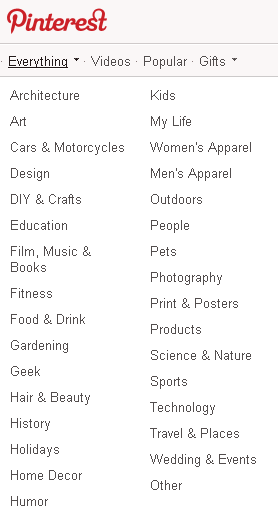With the various successes – and antics – of hackers identifying as “Anonymous,” hacktivism is very much on people’s minds these days. I’ve written before about Hacktivism (here, here, and here). Hacking is widely associated with breaking into computer systems (illegal), and more recently also with various forms of modifying or altering physical objects, particularly electronics, to get them to do non-standard things. But as Wikipedia makes clear, “hacktivism” is a more general concept than just activist-oriented hacking of these kinds:
Hacktivism (a portmanteau of hack and activism) is the use of computers and computer networks as a means of protest to promote political ends. The term was first coined in 1996 by a member of the Cult of the Dead Cow hacker collective named Omega. If hacking as “illegally breaking into computers” is assumed, then hacktivism could be defined as “the use of legal and/or illegal digital tools in pursuit of political ends”. These tools include web site defacements, redirects, denial-of-service attacks, information theft, web site parodies, virtual sit-ins, typosquatting and virtual sabotage. If hacking as “clever computer usage/programming” is assumed, then hacktivism could be understood as the writing of code to promote political ideology: promoting expressive politics, free speech, human rights, and information ethics through software development. Acts of hacktivism are carried out in the belief that proper use of code will be able to produce similar results to those produced by regular activism or civil disobedience. (via Hacktivism – Wikipedia, the free encyclopedia.)
I’ve been thinking about – and acting on – that wider definition of hacktivism as “the use of computers and computer networks as a means of protest to promote political ends” and I wanted to share with you some of my ideas and actions.
 Pinterest seems to me to be, mostly, little more than a huge catalog with ads. Lots of images of things to buy; it’s no mistake that one of the default categories is “Products I Love”. The whole category list is built primarily around selling and advertising. Where is the category for news? for politics or current events?
Pinterest seems to me to be, mostly, little more than a huge catalog with ads. Lots of images of things to buy; it’s no mistake that one of the default categories is “Products I Love”. The whole category list is built primarily around selling and advertising. Where is the category for news? for politics or current events?
And of course a huge percentage of the pins are just pictures of products with links to where they can be bought. When they aren’t essentially catalog entries (this beautiful dress, that pair of shoes), they are ads (“lose weight now”) or perhaps links to recipes; I haven’t followed that many pins as it gets depressing. It’s like one big supermarket checkout magazine – though thankfully with fewer pictures of Jennifer Aniston and Kim Kardashian.
Admittedly, there is a growing trend of pining images of nature, art, inspirational quotes, humor and photography on Pinterest that is most welcome (unlike the persistent internet meme of “cute cats” which also has a growing pin presence), but I think we can do more with the site. I think we can hack Pinterest – or at least engage in some hacktivism there.
Post pictures of Occupy protests. Make and post text images with facts on injustice and inequality, on the threat of climate change, on corruption, or with your favorite quotes from Malcolm X or Emma Goldman or Marx or Noami Wolf or Noam Chomsky. Take pictures of your squat or community garden and start a Pinterest board called “Squats” or “Collectivism” or “A Better Way of Life” or “Another World is Possible.”
Make and “pin” composite photos showing slums on one side and Rodeo Drive on the other, or garbage dumps and Walmart, or a homeless person and a banker. You get the idea.
Apart from its conspicuous consumption, Pinterest is also overwhelming white, middle-class, able bodied and heterosexual. Diversify! The first time I posted an image of two women kissing, I got a complaining comment from a woman who said her granddaughter used the site and she didn’t want her exposed to things like that. Expose! Be there, be queer, help them get used to it. Even Mitt Romney’s political advisers are backing down on the gay issue.
Twitter is also fertile ground for hacktivism of this sort. Recently, a progressive group posted a petition on one of those Change/Move/etc. petition sites concerning some minor reform at Domino’s Pizza. But even leaving aside how awful their pizza is, Domino’s is a nightmare. The founder is notoriously anti-choice and anti-gay, and the company is now almost wholely owned by your friendly neighborhood vulture capitalists, Mitt Romney’s Bain Capital, which bought 93% of the company in 1998. And it is rabidly Republican:
The Domino’s Pizza political action committee gave $26,500 to federal candidates in the 05/06 election period – 0% to Democrats and 100% to Republicans. David A. Brandon, Chairman and Chief Executive Officer of Domino’s personally gave $37,265 to Republicans ($0 to Democrats) in this same period. (via Domino’s Pizza – SourceWatch.)
 So rather than sign some no doubt well-intentioned petition to reform some aspect of this company, I went onto TweetDeck and created a quick list for any tweet mentioning Domino’s, and then replied to those tweets with my own, saying things like “Dominos is anti-choice, anti-gay and 100% Republican” and linking to the SourceWatch article.
So rather than sign some no doubt well-intentioned petition to reform some aspect of this company, I went onto TweetDeck and created a quick list for any tweet mentioning Domino’s, and then replied to those tweets with my own, saying things like “Dominos is anti-choice, anti-gay and 100% Republican” and linking to the SourceWatch article.
 In fact, one could automate this kind of hacktivist tweet – and other online / social media hactivist actions – through the new IFTTT service (“If This Then That”). Using something like this “recipe”, you could set up an automated response to tweets mentioning Domino’s, or whatever. Set up a new target every day, or week.
In fact, one could automate this kind of hacktivist tweet – and other online / social media hactivist actions – through the new IFTTT service (“If This Then That”). Using something like this “recipe”, you could set up an automated response to tweets mentioning Domino’s, or whatever. Set up a new target every day, or week.
If you can get a whole group on board, you might add some sort of hashtag hacktivism as well, and try to get something positive and/or provocative trending. Be creative. Would #JustinBeiberHatesDominos trend? You’ll never know until you try.



